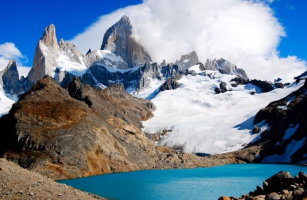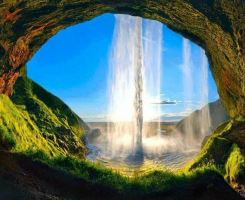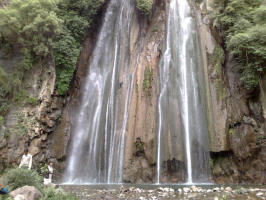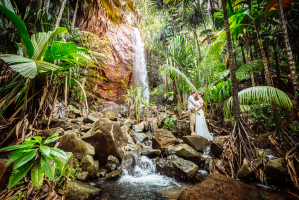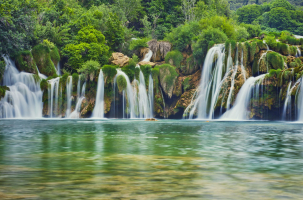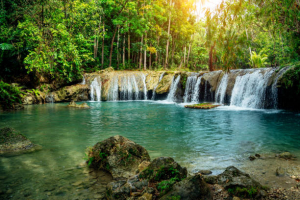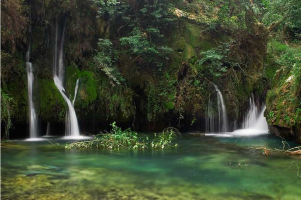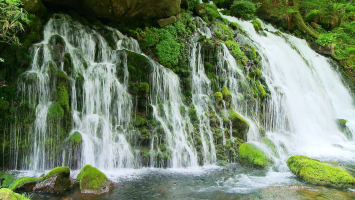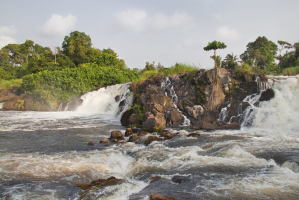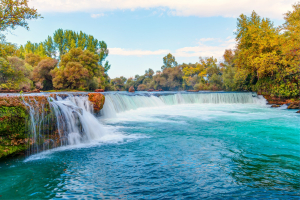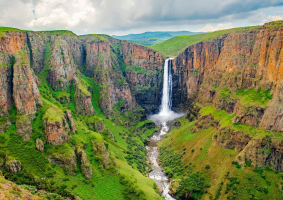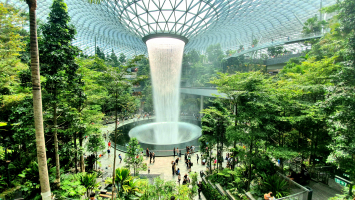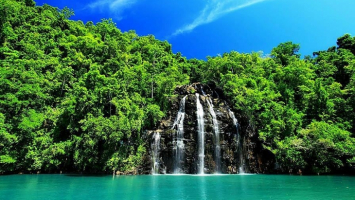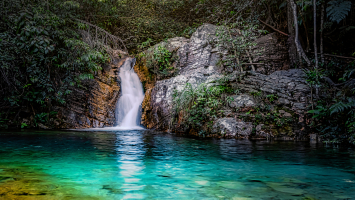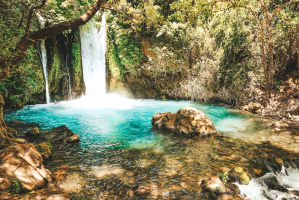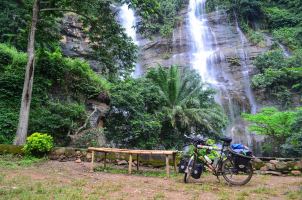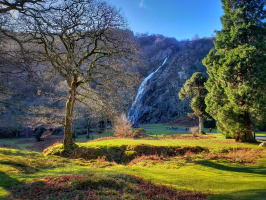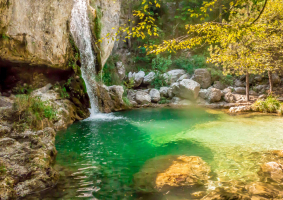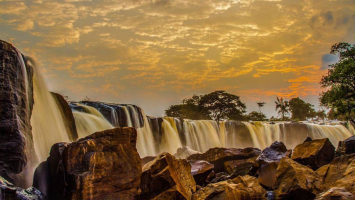Top 10 Most Beautiful Waterfalls in South America
Nothing compares to the breathtaking beauty and untamed nature of South America than its waterfalls. Both large and dramatic waterfalls with a significant ... read more...volume pouring over the edge as well as a series of steps with water spraying in attractive patterns are found in South America. This is the list of the most beautiful waterfalls in South America if you're heading to this land.
-
Iguazu Falls are undoubtedly the most beautiful waterfall in South America. This waterfall is shared by Argentina and Brazil and is accessible to both nations. The most spectacular waterfall in South America, this waterfall is regarded as one of the seven natural wonders of the world. There are 275 falls in it. Your entire body will shake and vibrate as you listen to the sound of the enormous water falling at full speed; it is an unforgettable experience!
These falls are spread out over a cliff edge that extends for more than a mile and a half, with about half of this actually having water flowing over it. A considerable distance away, one can see the plume of water rising into the air. The Devil's Throat is the most well-known vantage point for viewing the falls, where you can practically enter the waterfall's mouth and have it surround you on three sides.
For those who love photography, traveling to the Iguazu Falls from Brazil is a fantastic option because it provides ideal panoramic views from a distance. There are options for every taste if you'd like to begin your trip to Iguazu Falls from Argentina if you'd like a wilder experience!
Location: On the border between Argentina, Brazil and Paraguay
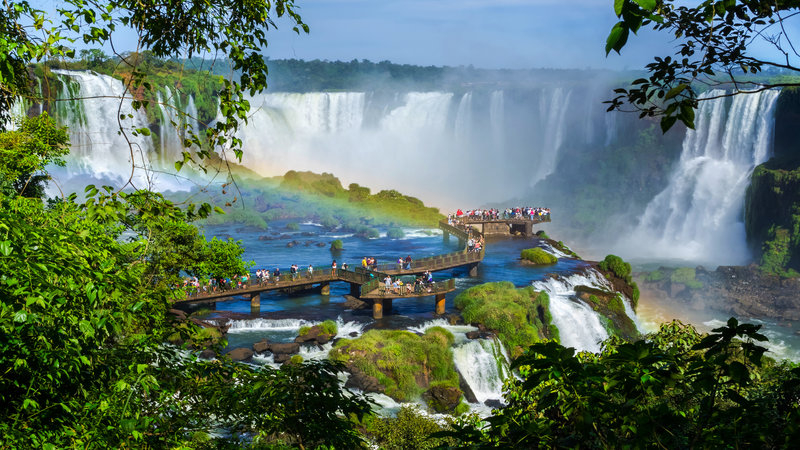
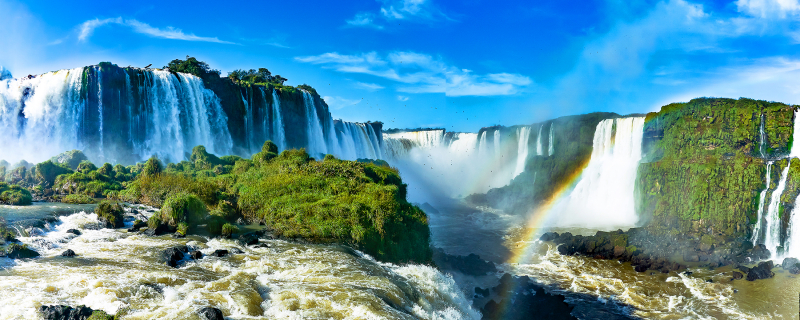
Photo: thetimes -
The largest waterfall in Chile's Torres del Paine National Park is called Salto Grande. The force with which it forces the vast volume of water through a tiny ravine before falling into the basin is spectacular, despite the waterfall's smaller size compared to some others. Those who are close enough to the waterfall will be able to feel its vibrations through the rock, and there is a lot of spray, which heightens the drama of the scene.
You must complete a brief hike that offers breathtaking views of the area's wild landscape in order to reach Salto Grande. On the way to the falls, keep an eye out for guanacos, which are wild camelids that are frequently seen.
To obtain a close-up glimpse of Salto Grande waterfalls, you'll need to travel quite a distance because they are located in a very isolated area of the country. It is a must-see sight if you have any plans to go hiking or rock climbing in the adjacent mountains. The closest city for tourists is Puerto Montt, which has a small airport and good connections to the rest of the nation.
Location: Torres del Paine National Park, Chilean Patagonia
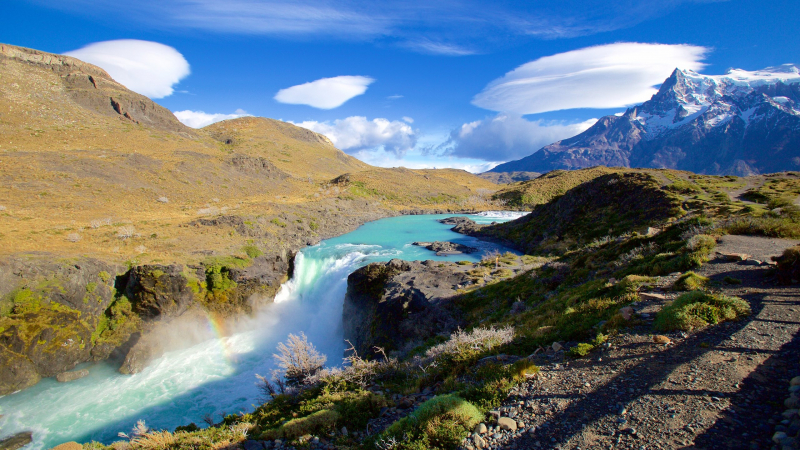
Photo: expedia 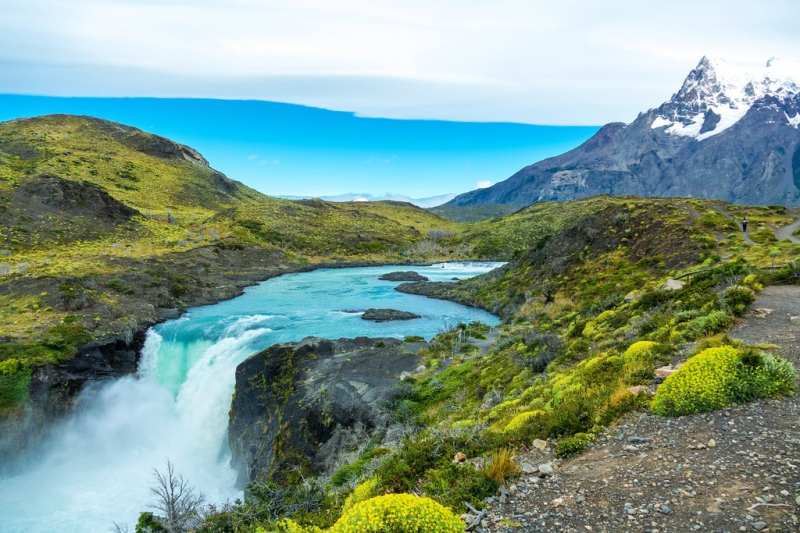
Photo; kimkim -
One of the most popular sights in South America is Cachoeira da Fumaça, which is situated in the magnificent Chapada Diamantina National Park. Locals have known about this white, foaming waterfall for a long time, but it wasn't until 1960, when pilot George Glass claimed to have "found" it, that it started to draw attention from around the world. It acquired the moniker "Glass Waterfall" as a result.
Its more popular name, Cachoeira da Fumaça, means "Smoke Waterfall" in English. Due of the waterfall's height, the wind can easily capture it as it travels downward, creating a cloud of mist. As a result, the waterfall appears to be blowing upwards, giving the impression of smoke.
One of Brazil's tallest waterfalls, Cachoeira da Fumaça, is a favorite destination for adventurous tourists. For the hike, it is advised to have a guide because the waterfall is inside Chapada Diamantina National Park.
Although the waterfall may dry up during the dry season, the rest of the year it is a very beautiful waterfall. Just avoid going during this time. The rainy season lasts from November to March. While hiking at this time of year can be frustrating, it has the advantage that the waterfalls are incredibly full.
Location: Chapada Diamantina National Park, northeastern Brazil
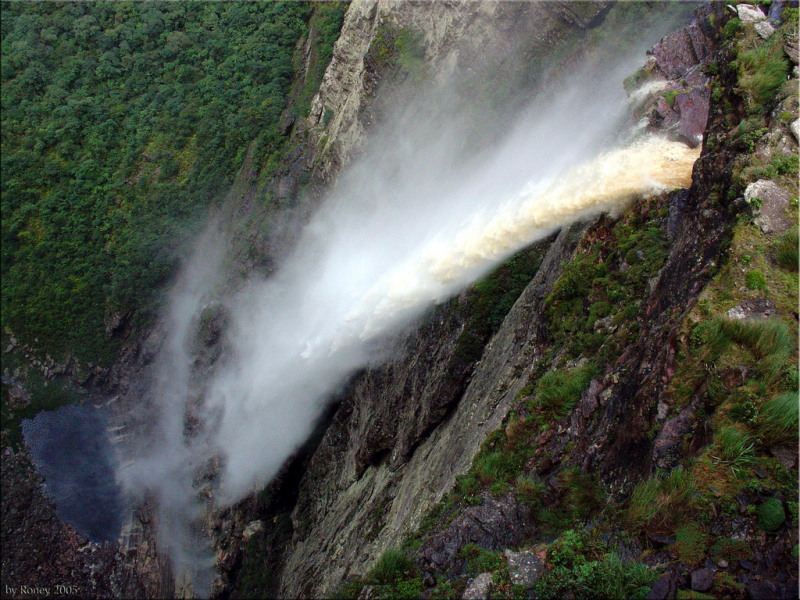
Photo: wikipedia 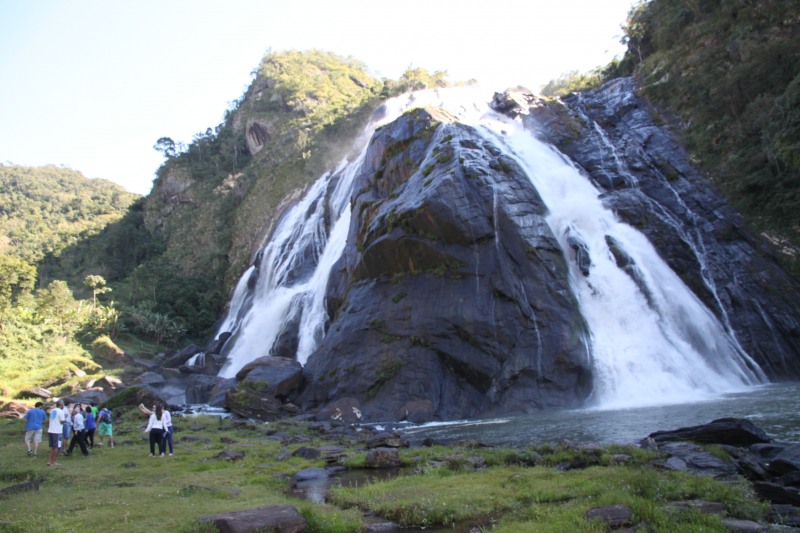
Photo: tripadvisor -
The Amazonas region of Peru is home to a number of gushing waterfalls. Some, however, draw a lot of visitors! Yumbilla Falls is a must-see if you want to honor one of nature's wonders away from the crowds.
This waterfall is reachable from the city of Chachapoyas, and you can go there on your own or with a guide. Without local knowledge, it would be simple to get lost on the trail because it is not well-marked.
The second-tallest waterfall in Peru and fifth-highest in the world is Yumbilla Falls. It is practically difficult to picture the thunderous hammering sounds produced at the bottom with a drop of around 900 meters!
Cuispes is the starting point for the three-and-a-half-hour climb to the waterfall. Yumbilla is best visited between April and May, when the rainy season is winding down and the pathways are less slick but the falls are still full.
Location: Amazonas Department, northern Peru
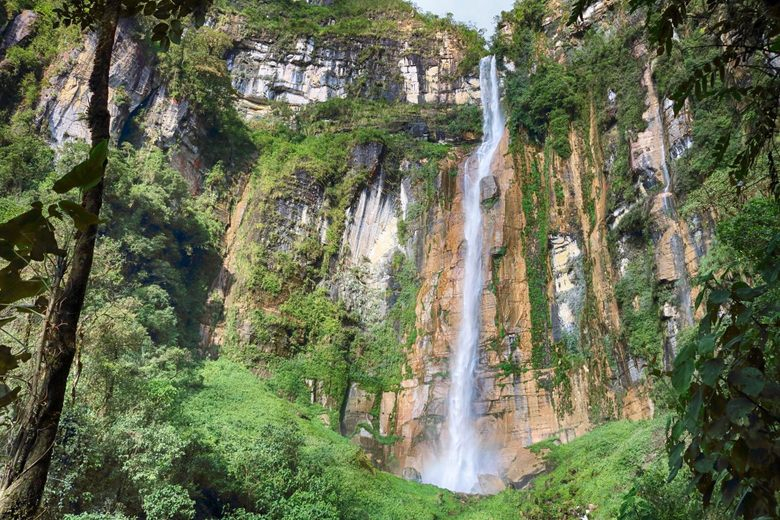
Photo: atlasobscura 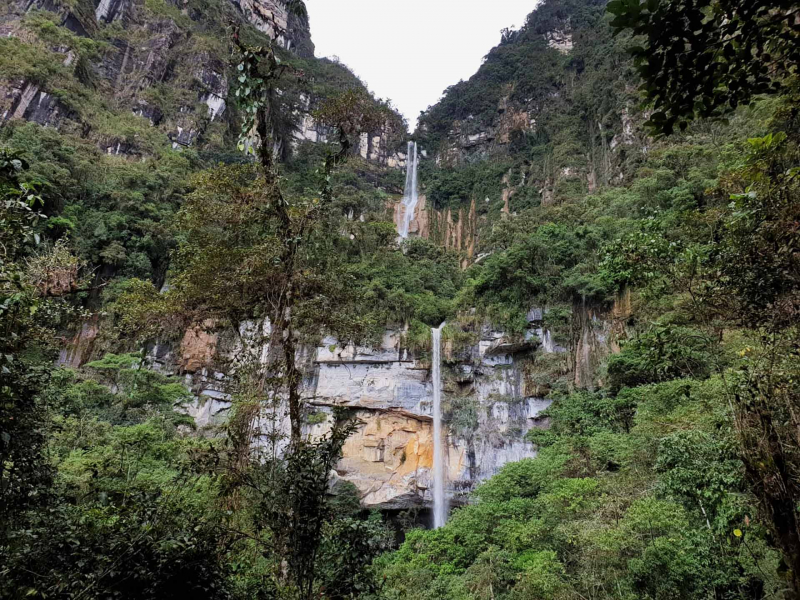
Photo: victoriaregia -
Caracol Falls, which is located in Caracol State Park, is unquestionably one of the most beautiful waterfalls in South America. After Iguaçu National Park, it is the second most popular natural destination in Brazil, drawing hundreds of thousands of tourists each year.
The Caracol River, which supplies the flood, sends a torrent of water crashing over basalt cliffs and into the Vale da Lageana. A steep hiking trail leads to the base of the waterfall, but if you don't feel like walking, you can also take the cable car, which makes three stops and offers amazing 360-degree views.
Visit this 25-hectare state park for more than just the falls, though. Visitors have the chance to see fascinating wildlife like coatis and monkeys on the many nature trails that wind through the region.
Location: Caracol Park, Brazil
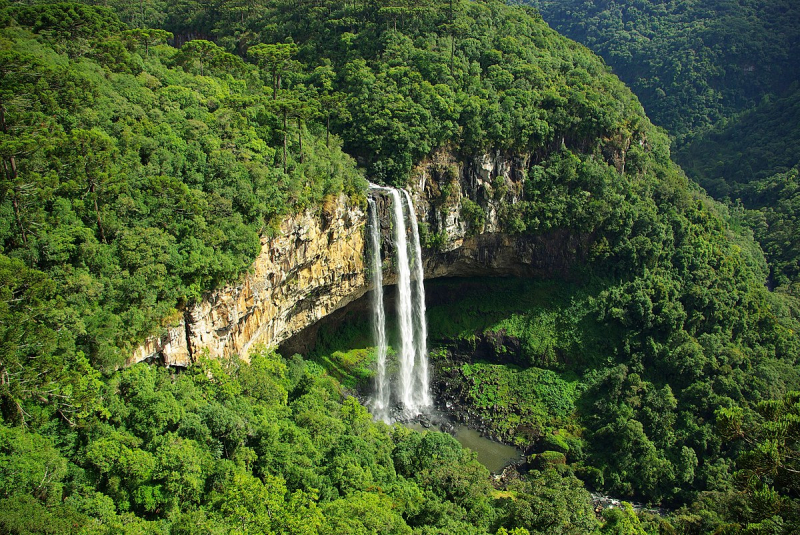
Photo: wikipedia 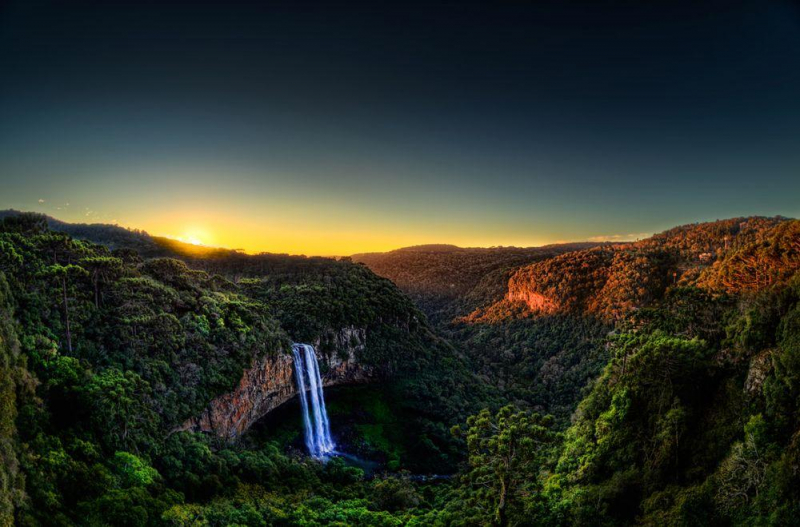
Photo: wondermondo -
The Ruta de las Cascadas is a popular route to reach Pailón del Diablo, which is located on the road between Baos and Puyo. This magnificent stretch of highway links the two cities and is a well-liked bicycle path.
Pailón del Diablo, also known as the Devil's Cauldron, enjoys a year-round water supply from Rio Pastaza. This implies that you will be impressed by the crashing falls whenever you go, regardless of the season.
This waterfall does have an admission fee, which is not unusual in Ecuador. Despite this, it won't break the money at roughly $2 USD per person! You can access the cliff-hugging winding staircase after paying the entrance fee. The scenery along this path is stunning. Follow the cliffs uphill for a closer view where you can really feel the force of the falls, if you don't mind getting wet.
Location: Tungurahua Province, central Ecuador
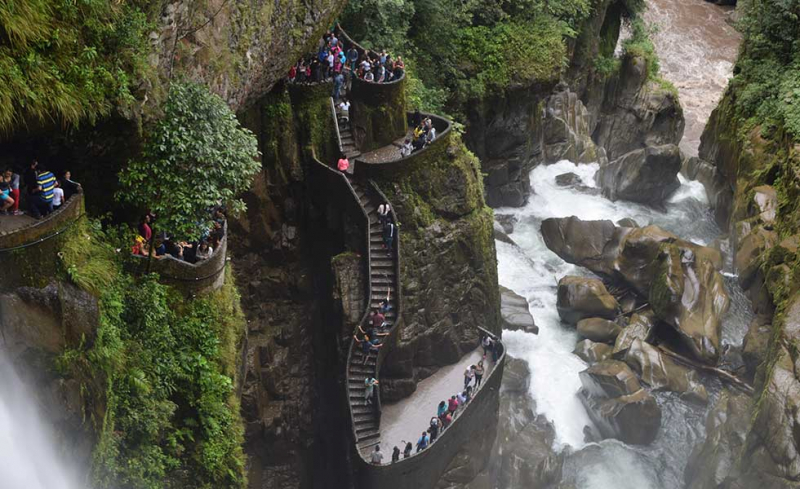
Photo; bucketlistec 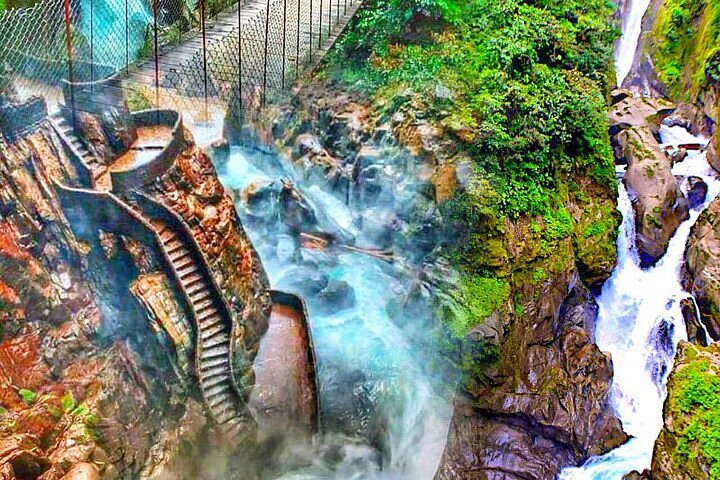
Photo: tripadvisor -
Guyana receives much fewer tourists than many other South American nations. It really shouldn't, though, because this stunning nation has so much to offer curious tourists. Guyana is known as the "Land of Many Waters" and is famous for its lush rainforest and sugarcane plantations.
It makes sense that Kaieteur Falls is one of the most popular tourist destinations in the nation, given this theme. This single-drop waterfall, one of the strongest on the continent, is about twice as tall as the impressive Victoria Falls. In addition, the surrounding lush greenery creates a stunning scene, filling the basin below with spray and causing rainbows to dance on the water drops. The falls' height, which is more than four times higher than Niagara Falls, is also remarkable.
This roaring waterfall can be reached by a multi-day journey, in addition to the popular day trip on a guided tour. Even though it's challenging, the hike is well worth the effort, it made our list of the best hikes in South America! This waterfall is a fantastic place to see uncommon and unusual species because it is situated right in the middle of Kaieteur National Park.
Location: Kaieteur National Park, Guyana
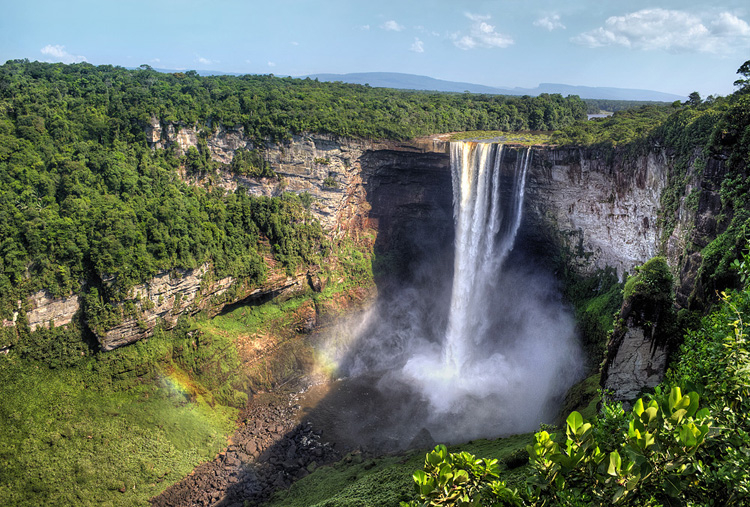
Photo; iexplore 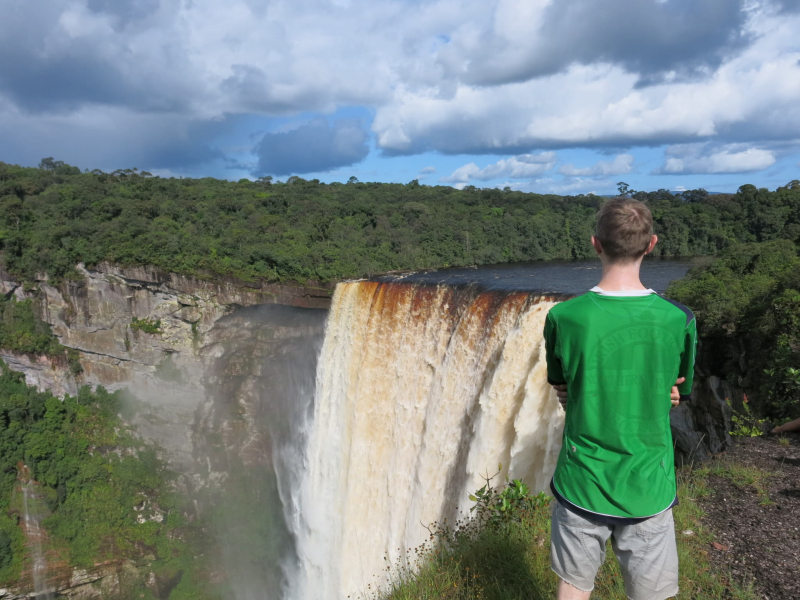
Photo: dontstopliving -
Gocta Waterfall, which was once a well-kept secret, has experienced a sharp rise in tourists recently. Although this two-tiered waterfall has been well known in the area for centuries, a German economist's "discovery" of it in 2002 brought it to the attention of the world.
Long kept a secret by the locals, it was thought that a mermaid guarded a pot of gold and lived in the plunge pool at the base of the waterfall. They were warned by ancient superstitions that she would curse anyone who revealed the location or description of the waterfall.
Although you shouldn't anticipate seeing nearly as many people as you would at Machu Picchu, Peru's most famous waterfall is constantly attracting new visitors. Although there is never a bad time to visit Gocta Falls, it is generally thought that the months of April through June are the best. The waterfall will be impressive because we are at the end of the rainy season, but it shouldn't be too soggy when you go!
Location: Amazonas Department, northern Peru
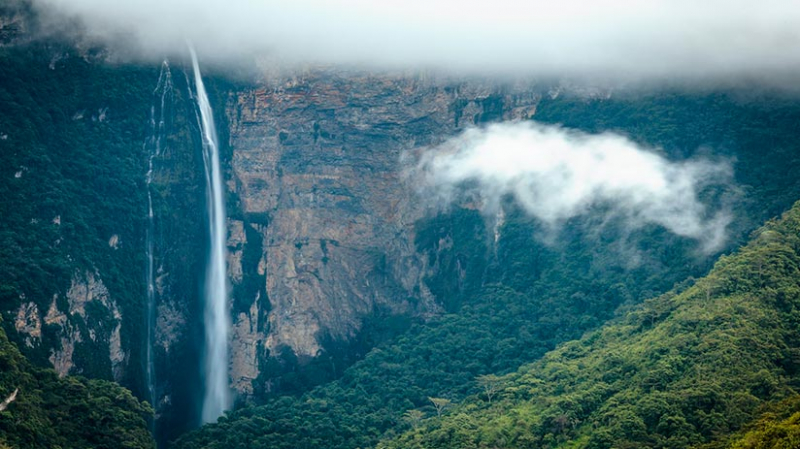
Photo: machutravelperu 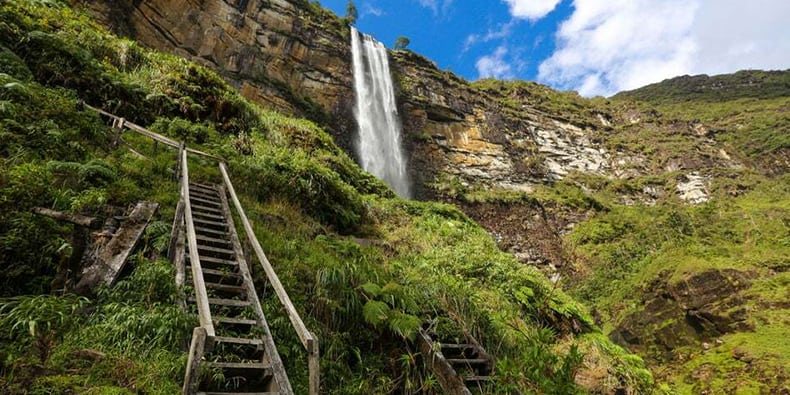
Photo: theonlyperuguide -
The tallest waterfall in the world and the highest waterfall in South America is called Angel Falls. The falls are Venezuela's most well-known tourist destination, and they are situated in a remote area of the jungle within Canaima National Park, a UNESCO World Heritage Site. Visitors to Venezuela's Angel Falls (Salto ngel) are equally entranced by the sheer vertical drop as they are by Iguaz's expansive panorama. They are possibly best known as "Paradise Falls" from Disney's Up.
The Spanish name for Angel Falls, Salto Angel, is Jimmie Angel, a US pilot who flew over them in the middle of the 20th century. However, there has recently been debate over whether the name ought to return to its original indigenous form.
The native name, once known as Kerepakupai-Mer, translates to "Waterfall of the Deepest Place." Although the naming of Angel Falls has received more attention in recent years, no one in authority has formally declared the name changed.
Location: Southeastern Venezuela.
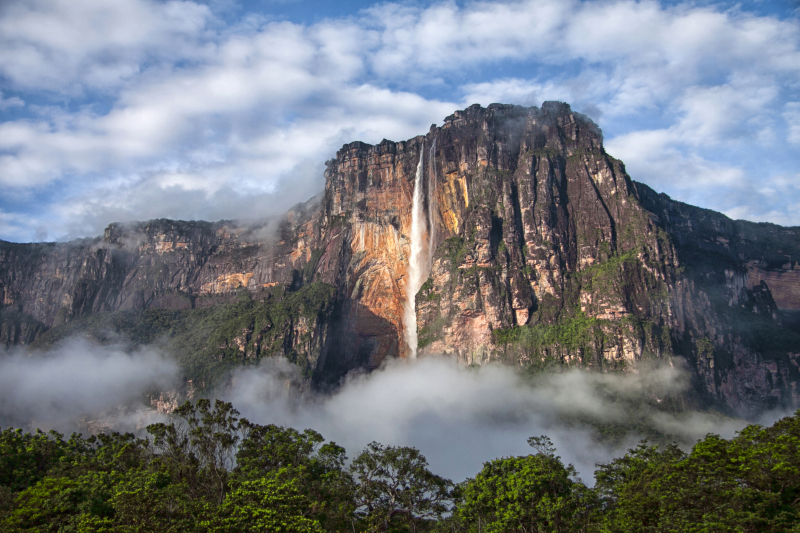
Photo: chimuadventures 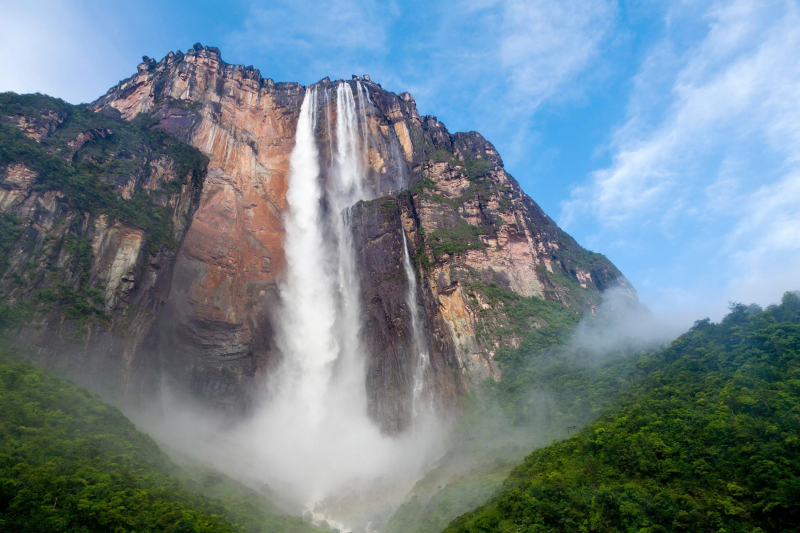
Photo; thetimes -
The Petrohué Waterfall, which is situated in the wilderness near Chile's Puerto Montt, is one of the most beautiful waterfalls in South America. Despite not being as tall as Iguaz Falls, Petrohue has one of the most beautiful backdrops in the world. Petrohué is a photographer's paradise with the Osorno Volcano in the background, especially in the spring when the water is rushing rapidly.
In the Vicente Perez Rosales National Park, which is under protection, you can find numerous volcanoes, hiking trails, and countless photo opportunities in addition to Petrohué Waterfalls. No matter your level of athletic ability, the park is a great place to spend time outside because the walks are mostly flat. Petrohue Waterfall can be easily visited even if you only have a day or two to spend in the city because the park is only a little over an hour from Puerto Montt.
Location: Vicente Pérez Rosales National Park, southern Chile
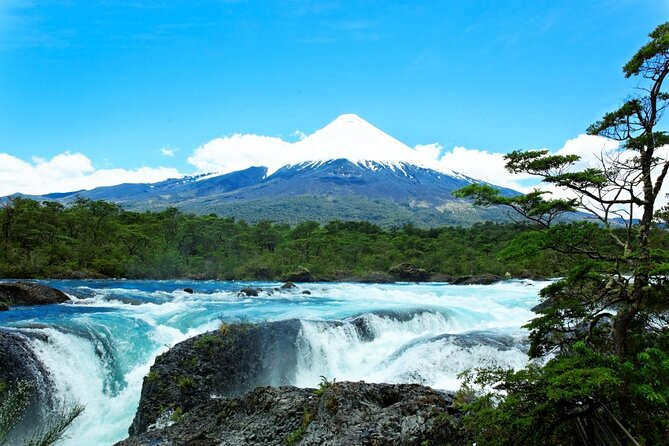
Photo: viator 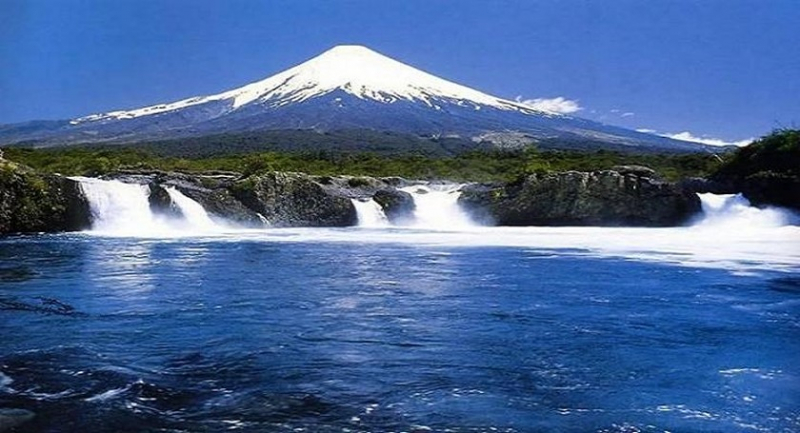
Photo: chile-travel-and-news












